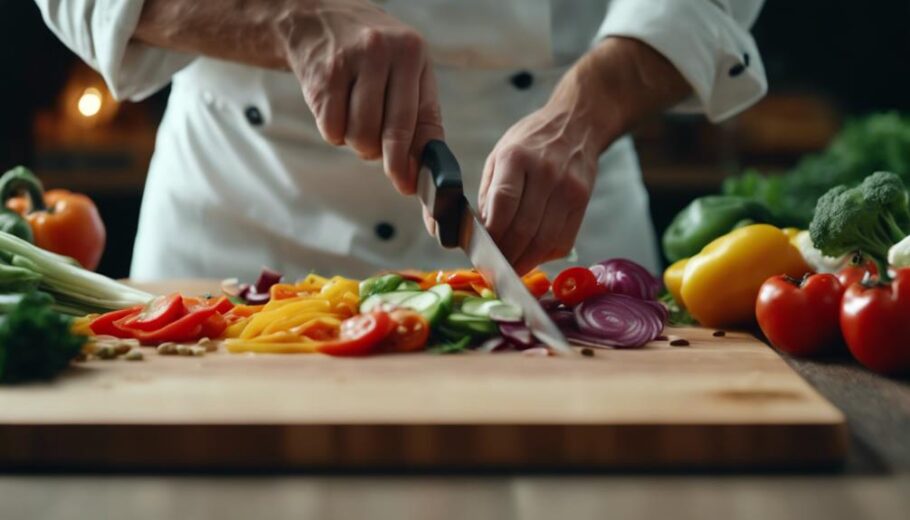Cooking is an art and a science. While creativity plays a crucial role, mastering essential cooking techniques ensures that every dish turns out flavorful, textured, and visually appealing. Whether you’re a beginner or an experienced home cook, understanding the right techniques can elevate your culinary skills. In this guide, we’ll explore 10 fundamental cooking methods that every cook should know, along with tips to perfect them.
1. Understanding Cooking Methods
Cooking techniques fall into three main categories:
- Dry Heat Cooking: Uses heat without moisture (e.g., grilling, roasting, sautéing).
- Moist Heat Cooking: Relies on water or steam for cooking (e.g., boiling, poaching, steaming).
- Combination Cooking: Merges both dry and moist heat (e.g., braising, stewing).
Each method enhances flavors differently, and mastering them can help you cook a variety of dishes effortlessly.
2. The 10 Essential Cooking Techniques

1. Boiling
What it is: Boiling involves cooking food in hot water (100°C or 212°F).
Best for: Pasta, rice, eggs, potatoes, and vegetables.
Tips for success:
- Use a large pot to prevent overcrowding.
- Salt the water to enhance flavor.
- Avoid overcooking vegetables to retain nutrients.
2. Steaming
What it is: Steaming cooks food with vapor from boiling water, preserving nutrients.
Best for: Vegetables, seafood, dumplings, and grains.
Tips for success:
- Use a bamboo or metal steamer for even cooking.
- Keep the lid closed to trap steam.
- Avoid overcrowding to allow proper heat circulation.
3. Poaching
What it is: Poaching involves cooking food in gently simmering water or broth.
Best for: Eggs, fish, chicken, and fruits.
Tips for success:
- Maintain water temperature between 160-180°F (70-82°C).
- Use aromatic herbs and spices for extra flavor.
- Handle delicate foods carefully to prevent breaking.
4. Sautéing
What it is: A quick-cooking method using a small amount of oil in a pan over medium-high heat.
Best for: Vegetables, meats, and seafood.
Tips for success:
- Use a heavy-bottomed pan for even heat distribution.
- Keep ingredients moving to prevent burning.
- Cut food into uniform sizes for even cooking.
5. Frying (Deep & Shallow)
What it is: Cooking food in hot oil to create a crispy texture.
Best for: Chicken, potatoes, dough-based snacks, and fish.
Tips for success:
- Use high-smoke-point oils like vegetable, peanut, or canola oil.
- Maintain oil temperature around 350-375°F (175-190°C).
- Drain fried foods on a paper towel to remove excess oil.
6. Grilling
What it is: Cooking food over direct heat, usually on a grill or open flame.
Best for: Meats, vegetables, and seafood.
Tips for success:
- Preheat the grill to the right temperature before cooking.
- Use marinades to enhance flavor and keep food moist.
- Avoid pressing down on meats to retain juices.
7. Roasting & Baking
What it is: Cooking food in an oven using dry heat.
Best for: Meats, vegetables, bread, and desserts.
Tips for success:
- Preheat the oven for consistent cooking.
- Use a meat thermometer for perfect doneness.
- Rotate trays for even baking.
8. Stewing & Braising
What it is: Slow-cooking techniques that use liquid to tenderize ingredients.
Best for: Tough meat cuts, root vegetables, and beans.
Tips for success:
- Brown meat first for deeper flavor.
- Simmer at a low temperature to prevent tough textures.
- Stir occasionally to blend flavors.
9. Blanching
What it is: Briefly boiling food and then shocking it in ice water.
Best for: Vegetables, nuts, and fruits.
Tips for success:
- Use salted boiling water to enhance taste.
- Quickly transfer food to ice water to maintain color and crunch.
- Drain thoroughly before further cooking.
10. Broiling
What it is: Cooking food under direct high heat.
Best for: Meats, fish, and quick-melting cheeses.
Tips for success:
- Keep a close eye to prevent burning.
- Use a broiler-safe pan or rack.
- Season well before broiling for maximum flavor.
3. Tips for Mastering Cooking Techniques
- Choose the right ingredients: Fresh, high-quality ingredients make a difference.
- Understand heat control: Adjust temperatures based on the cooking method.
- Use the right cookware: Different techniques require specific tools.
- Avoid common mistakes: Overcrowding the pan, under-seasoning, and improper temperature control can affect results.
4. Indian Cooking Techniques and Their Significance
Indian cuisine incorporates unique cooking methods that enhance flavor and texture. Some essential techniques include:
1. Tempering (Tadka)
- Heating oil or ghee with spices to release aromas.
- Common in dal, curries, and chutneys.
2. Dum Cooking
- Slow-cooking in a sealed pot to trap steam and flavor.
- Used in biryanis and rich meat dishes.
3. Tandoori Cooking
- Cooking food in a clay oven at high temperatures.
- Ideal for naan, kebabs, and tandoori chicken.
4. Bhunao (Sautéing & Stir-frying)
- Cooking spices and ingredients over medium heat to build depth of flavor.
- Key for many Indian gravies and masalas.
5. Steaming (Idli/Dhokla Preparation)
- Used for soft, fluffy dishes like idli, dhokla, and modaks.
These traditional methods enhance Indian dishes and make them unique compared to Western cooking styles.
Conclusion
Mastering essential cooking techniques helps elevate your home cooking, making meals more delicious, consistent, and enjoyable. Whether you’re boiling, sautéing, or using traditional Indian methods, each technique plays a role in crafting flavorful dishes.
Start practicing today and take your cooking skills to the next level!
For more expert tips and guides, visit IndianFoodGuide.